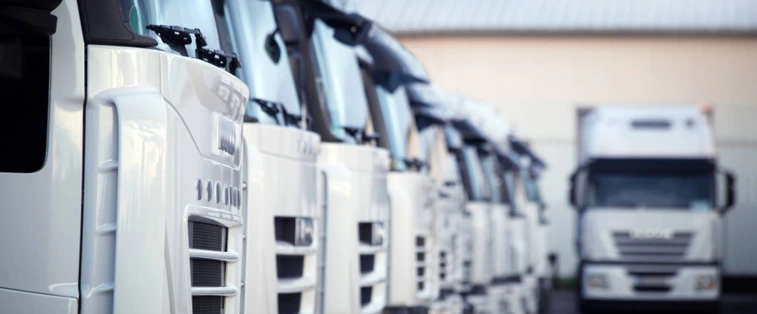

Fueling long-distance transport with Bio-LNG from sepuran® membranes
Evonik is responding to the challenges of today's security of energy supply: Using the group's innovative SEPURAN® Green membrane technology, pure biomethane can be extracted from biogas released during, for instance, wastewater treatment or organic waste processing, and reused to power large, long-distance vehicles such as over-the-road trucks or sea vessels.
renewables: contributors to energy security
Renewable power plays a key role in clean energy transitions and it is one of the main enablers of limiting and reusing waste, and achieving energy security. The rise of renewables is steadily growing – according to the International Energy Agency, they accounted for 28.7%, almost two-thirds, of all global electricity generation in 2021. Still, there’s much more development needed in this field to achieve a viable renewable energy mix that includes wind, biogas, solar and hydropower.
Biogas is a byproduct of decaying matter like animal manure, organic waste, specific high-energy crops, sewage and sludge, and even landfills. Consisting primarily of methane, the other main component of biogas is carbon-dioxide. Both are considered greenhouse gases, and as such, would harm the environment if released directly into the atmosphere. Luckily, it is possible to capture and upgrade these gases into usable bio-LNG, which is much cleaner than fossil fuels, for powering large, high-powered vehicles like freight trucks or cargo ships.
Evonik’s SEPURAN® Green membranes are the key elements of processing of biogas. These membranes are housed in canisters and when pressurized biogas is fed through the assembly, a chemical reaction causes the carbon dioxide to separate from the methane. Through a patent protected 3-membrane-stage process, Evonik’s SEPURAN® Green membranes are able to separate methane and carbon dioxide with purity levels of 99% from crude biogas.
The resulting biomethane can then be further processed and compressed to bio-liquefied natural gas (bio-LNG), which as a high-density energy source is ideal for use in high-mileage, fleet vehicles. As bio-LNG burns cleaner than traditional fossil-based fuels, it is highly valued as an alternative fuel for over-the-road trucks or other large engine-output applications like maritime vessels or train locomotives.
The renewable aspect of producing bio-LNG with Evonik’s SEPURAN® Green membranes also makes it a great contributor to the circular economy and to achieving the ideal mix of alternative energy sources needed to reach the Net Zero Emissions by 2050 Scenario, set out by the International Energy Agency.
In fact, the benefits that come from using SEPURAN® Green membranes can’t come soon enough. For many policy setters around the world, the increased production of renewable energy is a near-term goal. The European Union, for example, has set a target in its Renewable Energy Directive of having at least 32% of its energy mix from renewable sources by 2030.
Included in this goal are specific targets for a higher use of renewable fuels, like upgraded biomethane, in transport. According to the European Parliament’s “Alternative fuel vehicle infrastructure and fleets: State of play” briefing, as of 2020 there were already more than 26 million CNG and LNG natural-gas vehicles registered in the world, with the world’s growing share of LNG refueling stations are in Asia Pacific, Latin America and the EU. Additionally, it is projected that the currently increasing share of zero- and low-emission cars and vans and buses will rise even more dramatically within the EU between 2030 and 2050.
Bio-LNG - same range, less noise, lower consumption
The advantages of biomethane as a fuel1:
- up to 80 percent less CO2 compared to conventional diesel engines
- approximately 99 percent less particulate matter
- almost complete reduction in emissions of sulfur and nitrogen oxides
- approximately 50 percent less noise than a comparable diesel engine
- Toll exemption for LNG/Bio-LNG driven trucks until 20232
- Comparable range to conventional diesel between 1.000 - 1.900 KM3
- 15 % lower fuel consumption
- Support through energy tax reduction
- Continuous expansion of refueling infrastructure of around 97 by end of 2021.4
Marketable solutions for the defossilization of heavy goods traffic
|
Automobile |
Type |
Driven by |
perm. total weight |
Range |
|
Scania |
P 280 |
CNG |
18 t |
~460 km |
|
Iveco |
Eurocargo Natural Power |
CNG |
7,5 t – 16 t* |
~400 km |
|
Mercedes-Benz |
Econic NGT |
CNG |
18 t & 26 t * |
~650 km |
|
Renault Trucks |
Trucks D-Wide CNG |
CNG |
16 t - 26 t * |
~500 km |
|
FE CNG |
CNG |
30 t – 40 t |
~400 km |
*Depanding on type
Further information

Improving the carbon footprint - thanks to Bio-LNG
The powertrain of Volvo LNG trucks powered by gas is based on the proven and more efficient diesel combustion principle; no one else offers anything comparable. It delivers the same drivability and fuel efficiency as a diesel engine - and thanks to Bio-LNG, CO₂ emissions can be reduced to a minimum.
Source:
1 Zukunft Erdgas e.V.
2 BMVI
3 www.erdgas.info
4 DENA





